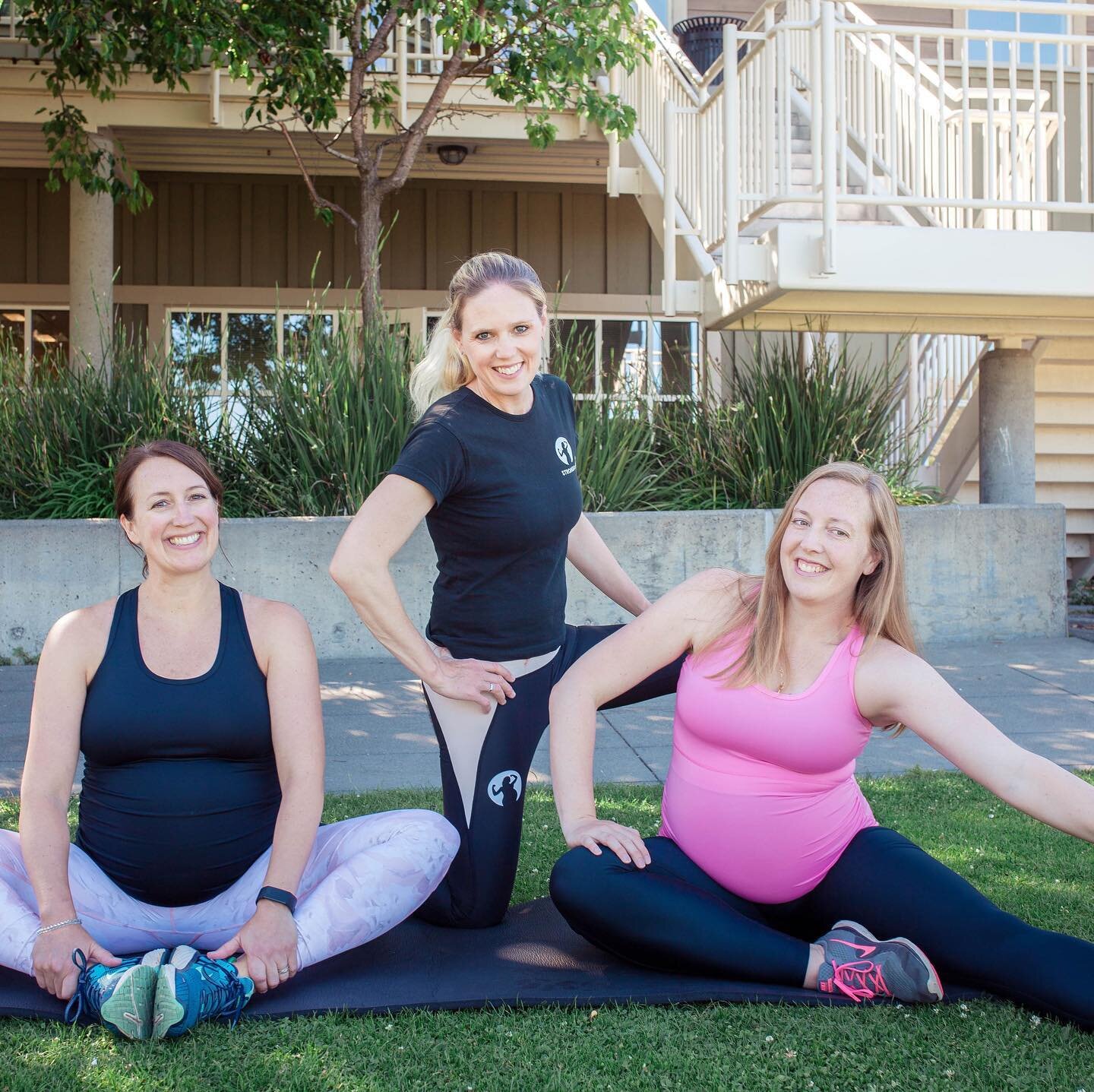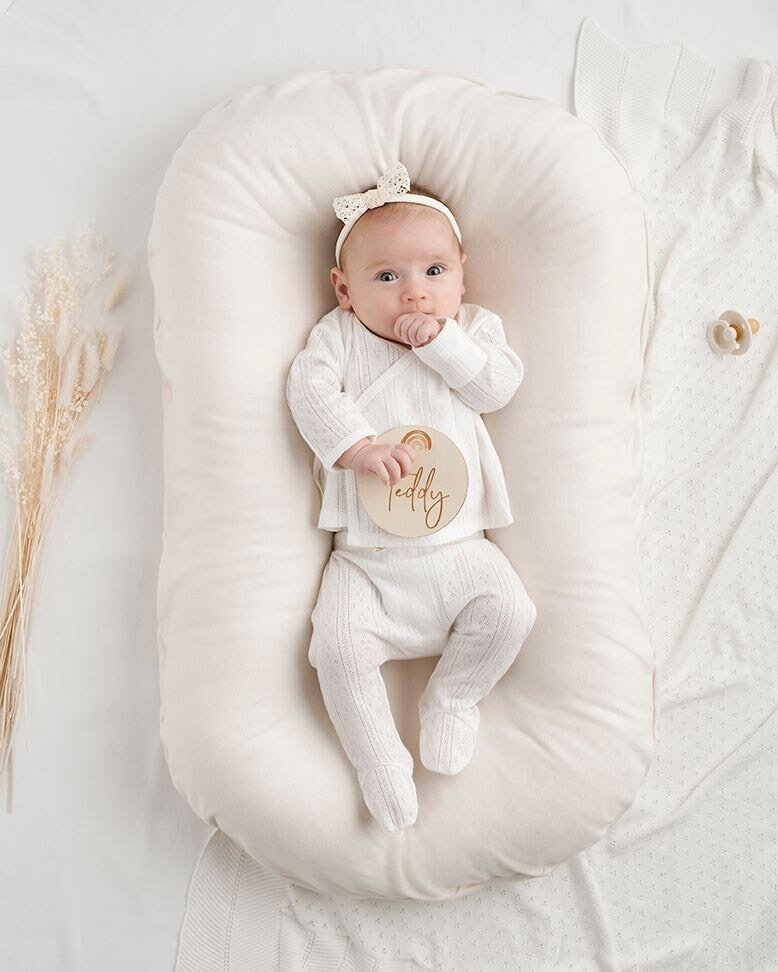The Definitive Guide to Essential Baby Clothes
Coconut Baby is excited to welcome baby fashion expert Sasha Nissengolts, who curates a lovely online boutique in her daughter’s namesake, Aria’s Closet. Let Sasha guide you through the daunting world of dressing your newborn — including what (and how much) you’ll need to buy before baby arrives.
Preparing to welcome a new baby is exciting, but it also comes with challenges - and lots of preparation. You’ll likely feel better prepared if you know the key pieces to have for your baby's first months of life. Here’s a few necessities and things to consider:
1. “Take me home” outfit
2. Footed onesies with zippers vs with buttons
3. Bodysuits and footed pants (or Footless Pants)
4. Baby mittens (while cutting their nails is still a bit intimidating) and hats
5. Weather conditions: Will you be needing short or long sleeves? Will you need a jacket to bring the baby home in?
6. Receiving blanket
7. Swaddles
8. Ideal fabrics for baby
If this is your first baby, you’ll likely be swamped with cute, coordinated outfits, tutus, and bathing suits from friends.
I’m fully confident you won’t use most of these things.
Why? Newborns need items that are comfortable, easy to put on, wash well, and are gentle to the skin.
Another important factor to consider is sizing. When it comes to sizing, gift-givers often don't take into consideration which season your baby will be wearing the garment or what your baby's size will be at a particular age. The average size of a newborn baby is 7.5 pounds — with 5.5 to 10 pounds considered “normal.” My baby, for instance, was born tiny! She wore preemie clothes for the entire first month of her life. We weren’t prepared for this at all because I assumed I would use what I had: newborn and 0-3 month sizing. It looked like she was swimming in those small sizes!
I always advise parents-to-be to ask for an approximate weight for your baby when you go to your OB at around 38 weeks, and make purchases around that time. Don’t buy too much too soon. Having a few items in size 0-3 months is a safe bet for the majority of babies - and even if your baby is big, these will work for the first month. Avoid buying too many pieces in the size "newborn.” If your baby is measuring above average, definitely stay away from those investments.
“Take Me Home” Outfit
A coming-home outfit is a staple when purchasing your baby’s first wardrobe and packing your hospital bag. Just like with any decisions for your child, it comes down to your preference.
Personally, I didn’t get to use our adorable “take-me-home” set because of how huge it was on my daughter, Aria. Make sure the pieces you choose are easy to put on and take off since you’ll likely be exhausted from labor and not want to fumble with complicated outfits. A few of my recommendations:
For a glitzy set: Itty Bitty Toes
Classic: Elegant Baby Pointelle Layette Set (Coming to our website April)
High-End Pima Cotton Onesies: Lyda Baby, Magnolia Baby
Footed Onesies for the Win!
These will undoubtedly be the most useful pieces of clothing for your newborn. If you have 10-15 onesies, you’re all set for the first year (but no shame in having more!). Why footed onesies? These avoid having to grab socks when your baby needs to keep his or her feet warm. It’s essential to keep a newborn's feet (and head) warm because this is where body heat dissipates quickly.
Next, the great debate: zippers vs. buttons. Again, this comes down to preference, but in order to see which is your favorite, it's good to try a few of each. I’m a zipper fanatic. Zippered onesies are easy to use, quick, and the clothing sits nicely.
However, buttons also have their advantages. For instance, if you don't want to fully undress your baby during diaper or bedtime changes, buttons can be undone from just the lower half so you don’t fully have to take the onesie off. The downside is that buttons will take longer to close. So if the goal is nighttime changes and keeping the baby asleep, there are even better options. Try swaddles, knotted swaddles, or sleeping gowns (see below). Some of the cult-favorite onesies:
Goumi Kids (coming to our website in a few weeks)
Bodysuits and Footed Pants:
These are great options to throw in the mix just to “spruce up” your baby’s wardrobe. After all, one of the most fun parts of parenting a newborn is dressing your little one! So why not have fun with it? Though there are endless options to choose from, here are a few recommendations:
Baby Mittens and Hats
As mentioned, it’s essential to keep your baby’s head warm to help their little body properly regulate temperature. Buy a little beanie or a knotted hat to have on hand throughout the newborn stage. Mittens are also a crucial staple for newborns. Because of babies’ startle reflex, if they’re not swaddled, mittens might be necessary to keep them from accidentally scratching themselves (at least until they’re old enough to have their nails cut).
There’s many options for mittens, but my suggestion is the ones that secure around the wrist, such as “goumi baby” mittens. It’s also easy to find cute, functional knotted hats and beanies, such as the ones from Elegant Baby, BabySoy, Carters, Gerber, or Lyda baby (you can decide how affordable or luxurious you want to go)!
Weather Conditions
When shopping for newborn clothes, consider the weather, season, and climate of your home. If you live in a warmer climate, avoid over-dressing your baby. Short-sleeve onesie tops with bloomers and lightweight footed onesies will be your go-to!
A helpful adage is that babies need to have one more layer than an adult would need. Your climate will reflect whether or not your baby will need to go home in a light-knit sweater, a jacket, or maybe just a light blanket over the hospital-provided onesie.
Layering will also reflect on the type of swaddles and sleep sacks you choose. Style, fabric, and thickness of sleep sacks vary, so opt for something warmer and thicker if it's cold out, especially if you plan an outdoor stroll close to bedtime.
My favorite jackets and knits:
Elegant Baby (amazing knit cardigans)
A&J Portugal
Boboli (fabulous baby jackets)
Petit Maison (everything! Especially hats, and we carry them at Aria’s Closet!)
Receiving Blankets:
Elegant Baby (love these and carry a few favorites in my store)
Anything Muslin/Organic Cotton/Jersey Knit
Swaddles and Sleepsacks (a.k.a. wearable blankets) :
Swaddles are another staple in this capsule collection. Meant to mimic the tight sensation of the womb, swaddles are meant to soothe your newborn and keep them from waking. There’s a massive variety of swaddles out there, and which one you choose is based on your preference and expertise.
These days, there are endless brands who take the guesswork out of swaddling. Some swaddles come as a large piece of fabric, and require you to teach yourself (a.k.a., watch a YouTube video), but this is so not for me. Have you ever tried swaddling a crying baby? Talk about overwhelming. Instead, I opt for zippered swaddles or, even better, swaddles with a velcro strap that holds baby's arms in.
Another convenient and easy option is a knotted swaddle. You wrap up your baby like a little burrito and knot the bottom with a large remainder of fabric left under the knot.
Sleepsacks and wearable blankets are similar to a swaddle, and are usually used when baby is a bit older and can practice safe sleeping. My daughter is almost two years old and still uses a wearable blanket. When using for a baby, these come as tighter-fitting styles and warmer fabrics for bedtime. Sleep sacks are also easy for diaper changes.
Some of my favorite swaddle and sleep sacks options are:
Happiest Baby (especially love the ‘sleep peas’)
Love to Dream (Stages 1,2, and 3)
Fabris to look for:
Modal - A form of rayon, plant-based textile. Super soft and comfortable. Modal is more breathable than cotton but not as durable. It's a great option for summer, very lightweight and absorbent.
Bamboo - Heavenly soft, 40% more absorbent than organic cotton. Bamboo is eco-friendly and hypoallergenic. One of the best options for onesies.
Organic Cotton - Grown without harmful chemicals, highly absorbent. Organic cotton uses less water to grow than conventional cotton. It washes well and is very durable.
Hopefully, this has helped you feel a little more informed and prepared. Remember, it’s O.K. if you still don’t feel like you have it all figured out. Being the parent of a newborn comes with a learning curve, and what works for one baby may not for another. The same goes sentiment goes for moms and dads: you need to find what you love most and what works for your baby. I wish you luck on this new and exciting journey!
Xoxo,
Sasha Nissengolts





























